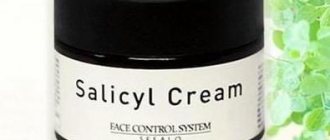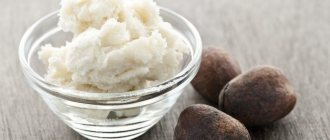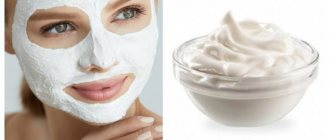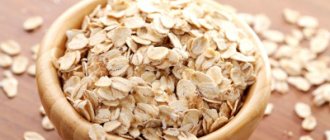Blue clay for the face or keel can have a truly miraculous and healing effect on the skin.
A cosmetic mask based on it is an inexpensive and effective remedy for getting rid of many problems: excessive oily skin, acne, sagging and the appearance of early wrinkles.
Due to the presence of a huge amount of microelements beneficial for human health in blue clay, this product will make your facial skin toned, velvety, radiant with health and beauty.
Benefits of blue clay for the face
Blue clay is a multicomponent source of elements biologically important for humans, which are present in greater or lesser quantities in the body and contribute to the normal functioning of its systems.
It is the composition of this type of clay that determines its benefits for the entire body in general and for the facial skin in particular. Individual components have an effect inherent in their properties. So:
- Silicon
. Helps synthesize collagen, and also takes an active part in natural metabolic processes, promoting the normal absorption of beneficial elements. - Iron
. This element helps to improve blood supply, enrich skin cells with oxygen, and therefore other nutrients. Which in turn allows you to postpone the processes of aging and withering of the skin. - Zinc
. Its tasks include fighting infections, which affects the beauty of the skin. - Copper
. This element has many properties. The functions of copper include the formation of auxiliary connective tissues, which, among other things, perform protective functions, stimulate the formation of collagen, and strengthen the walls of blood vessels. It is known that melanin production is impossible without copper. And melanin is the basis for an even, healthy tan. - Potassium
. Participates in the normalization of metabolic processes in the skin. Potassium deficiency and its consequence: improper metabolism usually leads to swelling around the eyes, dry epidermis, and irritation. - Selenium
. This component of blue clay promotes the absorption of vitamins and also helps them perform their functions. Due to normal levels of selenium in tissues, the risk of melanoma is reduced. - Magnesium
. This is an important component of ATP molecules, which are responsible for supplying energy to cells. The strength and elasticity of collagen fibers is ensured by the presence of cross-links, the formation of which depends on magnesium. - Manganese
. Manganese is involved in maintaining the normal structure of cell membranes. Participates in the regulation of the metabolism of certain substances, for example, copper, ascorbic acid, choline, B vitamins, and tocopherol. - Titanium dioxide
. Has a broad effect on the skin. The most important property of this element is its ability to protect the skin from ultraviolet radiation. Therefore, blue clay masks are relevant in the summer, when solar activity is maximum. Its use can also lead to a slight whitening effect. Titanium dioxide plays a big role in the beauty of the skin: it fights increased oiliness of the skin, mattifying its surface, evens out the epidermis, removing dead particles, and even removes wrinkles. - Aluminium oxide
. Abrasion is one of the functions of aluminum oxide. It represents mechanical destruction and removal of dead particles of the epidermis. Thanks to this, epithelial renewal is stimulated, which leads to skin smoothing.
Based on the composition of blue clay described above, we can highlight its main properties that manifest themselves when used to treat facial skin: disinfection, cleansing, degreasing, whitening, reduction of inflammatory processes, nutrition and hydration, normalization of all natural processes in the skin, restoration of cell structure, narrowing pores, rejuvenation, prevention of aging, protection from external factors.
You can improve and diversify the beneficial properties of blue clay by adding additional nutritional elements to the masks, taking into account the nature of existing skin problems, its type and a few contraindications.
It is noteworthy that blue clay can be used at any age. Each age category has its own problems, for example, in adolescence there is acne, in adulthood there is aging of the skin and the appearance of wrinkles.
Why is blue clay used in facial care?
Blue clay is recognized as the most popular. The reason for this is the extensive list of its beneficial properties, thanks to which this type of clay can be used to solve the following problems: the presence of microscopic impurities and enlarged pores, fine wrinkles, sagging and decreased tone of the skin, decreased vitamin content in the skin in spring and autumn, disease of the sebaceous glands in the form of acne, non-inflammatory blackheads, uneven skin color (freckles and other age spots), allergies that appear on the face, some dermatological problems (eczema, psoriasis, furunculosis). Let's look at some indications for use in more detail.
Blue clay for face against acne
Blue clay is an active “rescuer” against acne in an advanced stage due to its antiseptic qualities and anti-inflammatory properties.
The zinc contained in this natural material plays an important role, because it fights skin infections. Using a clay mask with aloe juice or aloe vera gel brings almost instant results. Already the first procedures will remove irritation and redness.
Also add herbal infusions and aspirin (acetylsalicylic acid) to disinfect inflamed areas on the face, thereby eliminating acne.
Blue facial clay for skin whitening
Summer is the time when the sun's rays become more active, which leads to the appearance of dark spots on the skin.
This spotting on the skin of the face is especially unpleasant. Blue clay can restore the skin to its uniform, familiar color and protect against ultraviolet radiation. Copper contained in blue clay promotes the formation of melanin, which forms an even tan. However, improper distribution of this pigment manifests itself in the form of age spots.
To lighten the skin on your face, add lemon, cucumber, potatoes, melon, parsley, grapefruit, sea salt, milk, vitamins PP, K, E to the mixture.
Blue clay for oily skin
Oily skin requires additional cleansing of pores from toxins and any other impurities in order to improve metabolism in cells, improve the enrichment of oxygen and other elements important for their functioning.
Oily skin on the face requires special components that would provide it with thorough cleansing, tightening of pores, and eliminating oily sheen. Such components are rice, oat flour, mineral water, aloe juice, lemon juice, alcohol tincture of calendula, egg white, decoctions of chamomile, nettle, puree from various fresh fruits, vitamins E, B, A.
Blue clay for face against wrinkles
The appearance of wrinkles on the skin is associated with age-related changes, deterioration of metabolism, and the presence of active facial expressions.
Blue clay restores all metabolic processes in the skin, helps saturate cells with useful elements, and moisturize the skin. The effect of blue clay can be called rejuvenating, toning, tightening. Restoring skin firmness and elasticity leads to a reduction in the number of wrinkles. To speed up the appearance of the rejuvenating effect, enrich masks with blue clay with auxiliary components. For example, add vitamins in the form of oil (E, PP, A, C, B), cocoa, sea buckthorn oil, yeast, kefir.
Blue clay for dry skin
Blue clay can dry out the skin.
To avoid additional degreasing and dehydration of dry skin on the face, it is worth enriching the solutions with additional components. For improved nutrition, hydration, increased tone and smooth out fine wrinkles on dry skin, use cream, sour cream, olive oil, chicken egg yolk, apricot, grape or peach oil, honey, avocado, argan oil, rose hips, vitamins E and B. Complex The described ingredients help speed up the healing process of small cracks and deeply moisturize the skin.
After masks with blue clay, treat your face with moisturizer.
conclusions
- Blue clay is widely used in many areas of human activity.
- The cosmetic variety of the product has a fairly wide range of effects on the epidermis.
- As a result, there are also many indications for use here, that is, this substance is universal.
- Among the best clay mask recipes you can find options for solving a wide variety of problems.
- In order to avoid unpleasant consequences, you should follow the rules for using products containing clay.
Using blue clay for the face at home
Using blue clay at home is a cheap way to refresh, moisturize, rejuvenate, protect, and cleanse your facial skin. Clay procedures do not involve the use of any special equipment or tools. To achieve success in DIY facial skin care, follow simple recommendations on technology and recipe.
Recipes for blue clay face masks
Considering the number of possible additional ingredients to clay, it becomes clear that there are even more varieties of masks with blue clay. However, do not get carried away with saturating mixtures with too many ingredients. It’s better to use ready-made recipes:
- Moisturizing mask for dry skin
. Combine and mix 1 tbsp. l. cream and sour cream, add a quarter teaspoon of peach or apricot oil. After achieving homogeneity, add 20 g of blue clay. This mask is applied for 20 minutes. - Nourishing mixture for dry skin
. Achieve a uniform consistency by mixing the yolk with olive oil (20 g). Add blue clay (20 g), mix the solution and apply immediately. Leave to act for 15 minutes. - Refreshing mask for dry skin
. Dilute 10 ml of olive oil with 10 ml of fresh cucumber juice, grind with a tablespoon of blue clay. Treat your face and leave for 15 minutes. - Purifying mask for oily skin
. Take 1 tbsp. l. rice flour and blue clay powder. Add a small amount of water and stir the ingredients. Apply the finished mixture for 15 minutes. - Anti-acne mask for oily skin
. Add blue clay (15 g) and tea tree oil (2 g) to warm milk (15 ml). The exposure time of the mixture is 10-15 minutes. - Whitening mask for any skin
. It contains blue clay and kefir. For one tablespoon of powder, take enough kefir to bring the solution to the desired thickness. Wash off the mask after 20 minutes. - Whitening composition for oily skin
. Add 5 ml of juice squeezed from lemon and blue clay to 20 ml of vodka. To bring to the desired thickness, use clean water. The effect of the mask is limited to 20 minutes. - Anti-freckle mixture for normal skin
. Mix 1 part sea salt with 3 parts blue clay, add whipped egg white and fresh milk. After 15 minutes, remove the mask with warm water. - Disinfecting mask against acne and irritation
. It contains the following ingredients: 3 tbsp. l. clay, 1 tsp. talc from the pharmacy, 5 g of glycerin, 5 g of salicylic alcohol, mineral water. This complex, used regularly as a mask, allows you to get rid of the inflammatory process on the skin of the face and, accordingly, purulent rashes. - Nourishing mask for normal skin
. Ingredients: 3 tbsp. l. clay powder, water, yolk, 1 tsp. lemon juice, honey, olive oil. Apply the mixture for 15 minutes. - Rejuvenating mask
. The composition includes 2 tbsp. l. clay powder, a few drops of aevit and 0.5 tsp. cocoa. This mixture is applied in two layers for 20 minutes. Use cool water to rinse off.
How to properly use blue clay for the face
To properly prepare masks with blue clay, you should adhere to the following recommendations:
- To break up caked lumps, sift the amount of clay specified in the mask recipe. Sometimes, with the help of such actions, it is possible to weed out unwanted elements that end up in packaging at the production stage. The sifted powder will be enriched with oxygen and will be easier to mix.
- Use only natural ingredients for any type of mask.
- Do not exceed the content of additional components allowed by the recipe.
- Use only fresh solutions; during storage, the mixture loses its properties, so do not prepare for future use.
- The solution should be plastic, no thicker than sour cream, so that the applied mask does not drip off the skin.
- It is preferable to first mix the clay powder with liquid (water or broth) until smooth, and then add auxiliary ingredients.
- Do not use metal utensils to mix components.
How to apply a blue clay mask to your face
The mask application technology includes the following rules and recommendations:
- Pre-cleanse the skin on your neck and face, you can even use a scrub to remove dead elements and improve the penetration of the beneficial ingredients of the mask into the skin.
- Solutions with clay can be applied to both dry and moisturized skin.
- Start applying the solution from the bottom of your face. You can start from the neck and move towards the forehead. The blue clay mask should be applied to the entire skin of the face, with the exception of the area around the mouth and eyes.
- To cover your face with the mixture, use a special brush or spatula. Keep in mind that a brush is the safest applicator option, while the latter, a spatula, can injure existing acne.
- The amount of solution applied should not be large. The large weight of clay drying on the face can lead to its stretching and other mechanical damage, which leads to the formation of wrinkles. Any facial movements produce a similar effect. Therefore, they should be excluded during the exposure of the mask. It's best not to even talk.
- The best body position during the clay procedure is lying on your back.
- To avoid premature and uneven drying of the solution, moisturize with boiled water those areas of the face where the solution begins to lighten.
- After 15-20 minutes of exposure to the clay mixture (or other period of time provided for in a specific recipe), rinse the mask thoroughly with clean warm water. Then rinse your skin with cool water. You can also use wet wipes.
- Each recipe provides for the frequency of use of the face mask. Sometimes the skin type may be a limitation: dry skin - 1-2 times a week, other types - 2-3 times.
How to properly remove a medical mask and dispose of it
It is important to know not only how to put on and wear a mask, but also how to remove it.
How to properly remove a medical mask and dispose of it:
- You must first wash your hands with antibacterial soap or treat them with a disinfectant;
- Without touching the mask, untie the knot of the string or pick it up by the loop;
- Holding the string or loop, place the mask in a plastic bag or airtight container;
- Recycle. Dispose of in a trash can that is hermetically sealed;
- Wash or sanitize your hands again.
Graphic reminder:
How often should you change a disposable mask?
It is important to know how often you need to change a disposable mask. Because when using the product for a long time, it loses its effectiveness. Moreover, it turns from a means of protection into a source of potential danger. Because pathogenic bacteria and viral particles accumulate on the mask.
2 hours is the recommended time to wear a mask. Then it should be changed.
4 hours is the deadline after which the mask completely ceases to be effective.
The mask must be replaced immediately if it becomes wet.
Contraindications to the use of blue clay
Contraindications to the use of blue clay are:
- Individual intolerance to individual components.
- The presence of diseases in the body associated with an excess of any blue clay ingredient.
- Presence of wounds, burst pimples. With such skin damage, a clay mask can be harmful.
To test the body's reaction to blue clay, apply a small amount of the solution to the wrist area, where the skin is thin and sensitive.
After some time it will become clear whether it can be used or not. Sometimes irritation appears after several procedures. In this case, you should not immediately sin with blue clay if there were other components in the masks. It is recommended not to enrich the first masks with auxiliary ingredients.
How to use blue clay for the face - watch the video:
In order not to cause harm, when using a clay face mask, adhere to the technology of applying the solution, and also follow the rules of conduct during the action of the beneficial mixture, the timing and frequency of exposure.
Reviews
Alla, 37 years old
Pimples appear on the face frequently. I tried many different tips to eliminate them, but only one recipe deserves attention. I mix green and blue clay in equal proportions, add water and 2 drops of tea tree essential oil. I carry out the procedures every other day. After 2-3 sessions, the skin is completely cleared of inflamed spots.
Mila, 29 years old
A product based on blue clay helps to narrow pores. I bought a package of MedikoMed powder for 50 rubles. This amount is enough for 3-4 months. I dilute the powder with green tea (fresh brewed). For 2 tsp. clay takes 1 tsp. tea. You need to keep the mask on for 15 minutes. Rinse off without using soap or other cleansers. After one treatment, the pores become noticeably smaller, but to get maximum results I spend 5 sessions with a break every 3-4 days.











